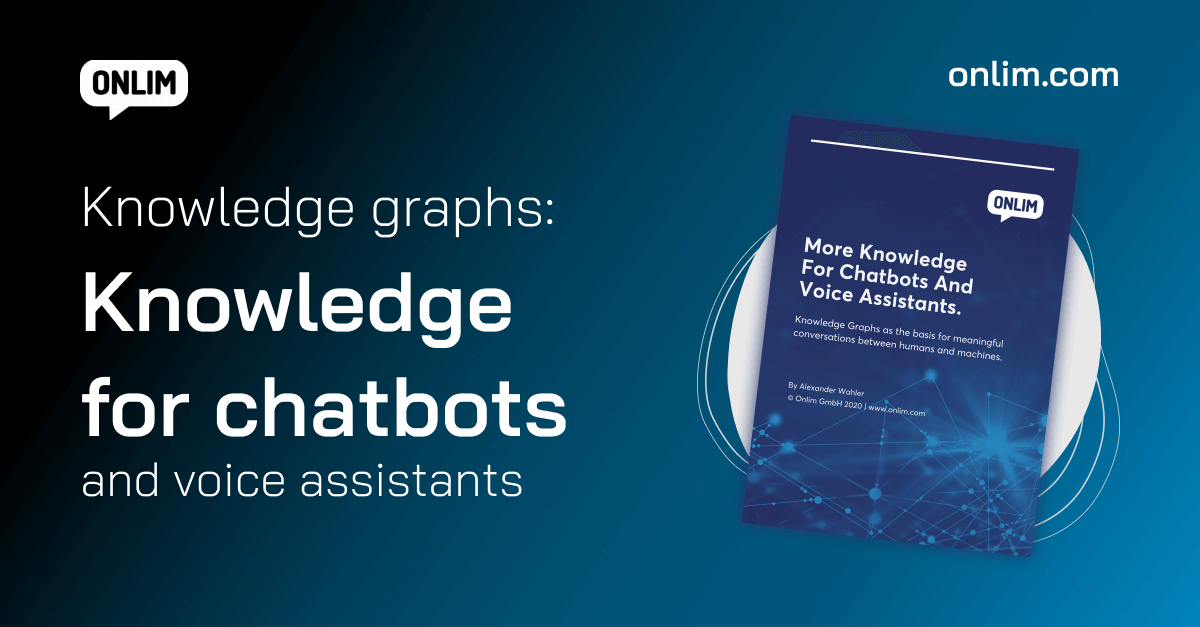6 Chatbot Myths That Are Preventing Your Business From Growing
Guest post by Molly Crockett.
Even though the history of chatbots goes back into the 1960s, chatbots are one of the latest developments in technology that all businesses should consider using. When properly implemented, chatbots can help to improve employee engagement, as well as customer experience. Yet, many businesses are still unable to fully reap the benefits of this technology, partly due to a number of common chatbot myths. Here we debunk six popular chatbot myths.
Myth #1: Chatbots Are Only Useful To Specific Industries
One of the biggest misconceptions is the notion that chatbots are only applicable to specific industries, most commonly, that they only deliver results in customer service sectors. Whilst it’s true that most people view the primary function of chatbots to be talking to customers, that is not their only function or industry in which chatbots can be successful.
In particular, enterprise chatbots, such as those at Onlim, have the ability to deliver successful results in a variety of industries, including tourism, finance, e-commerce, utilities and educational institutions, to name just a few. By being able to automate mundane or repetitive tasks, employees have more time to spend engaging in more focused, creative and strategic tasks.
Myth #2: Chatbots Can’t Contextualize And Personalize Responses
Although some traditional chatbots have had some difficulties with understanding context, recent development in AI technologies means that this is now increasingly untrue. Development of AI technologies, including Natural Language Processing (NLP) and Knowledge Graph technology, both of which Onlim use, mean that chatbots are increasingly able to sustain relevant conversations, better process users’ intent and offer more personalized responses.
More Knowledge For Chatbots And Voice Assistants

Myth #3: Chatbots Can Only Be Used On Messenger
The chatbots which are most commonly used tend to use Facebook Messenger. However, chatbots are not limited to any one type of social platform. For instance, Onlim has chatbots as well as voice assistants which are available on a number of different platforms, including Google Assistant, Amazon Alexa, on telephone systems, websites and apps, as well as on Messenger. You can even use chatbots on WhatsApp, Kik and Slack.
Myth #4: Chatbots Prevent Access To A Human Agent
Perhaps the biggest misconception of all is the notion that by using a chatbot you are no longer able to have access to a human agent. Again, Onlim’s chatbots are a good example of this, as all their enterprise chatbots include a fully seamless handover from chatbot to human agents whenever the need arises.
Human agents are as important when using chatbots as at any other time. If anything, human takeover is a necessary and crucial part of any successful chatbot use. Whilst chatbots are increasingly capable of resolving many issues independently, there are instances when queries are particularly complex. At this stage, having the mechanics in place to handover to a human agent is incredibly important and many chatbots are able to do precisely this.
In fact, if a chatbot detects a problem or a query that is complex, it is able to direct clients to a Live Chat. In this way, clients are then efficiently connected to a human agent who can help them to resolve the issue.
Myth #5: Chatbots Are Limited To Text-Based Technology
Chatbot technology is constantly evolving and adapting to growing demands. Whilst text-based chatbots dominate, they are not the only type available.
In recent years, increasing numbers of voice chatbots have become available. Chatbots’ evolving ability to understand and recognize human speech has resulted in more verbal interactions between chatbots and humans. For instance, Alexa, Google and Siri all make use of such new innovations. This opens up possibilities for companies looking to use chatbots in different contexts. As well as it makes chatbots more accessible to customers with different needs.
Also interesting: Improve Customer Experience With The Help Of Voice Assistants
Myth #6: Chatbots Are Essentially A FAQ Page On A Website
A FAQ page on a website can be extremely useful, but chatbots differ significantly. Firstly, when a client uses a FAQ page, they are not able to ask specific or individual questions. However, by utilizing a chatbot, organizations are actually able to provide clients with much more personalized service.
Clients are able to interact with chatbots in a way which is not possible with a static FAQ page. Moreover, chatbots are able to deliver services in a more user-friendly manner. Not only by providing personalized responses but by also using the same type of language as that used by humans. Ultimately, this helps lead to a much more positive client experience.
Conclusion
Organizations of all sizes and across all industries should strongly consider investing in chatbot technologies. Not only do chatbots help to provide opportunities for employees to engage in more strategic and creative tasks, but they are increasingly able to provide a personalized and real-time experience to clients. Ultimately, this enables your business to grow in an efficient way, whilst improving customers’ experience.
Author bio:
Molly Crockett is a successful marketing writer for Academized.com and Ukwritings.com, where she regularly shares tips and advice for improving customers’ experience and satisfaction. Molly also writes for Essayroo.com, including about ways to utilize the latest technological developments to support businesses to grow. She enjoys sharing lifestyle and personal development advice and tips with her readers, which are rooted in her own unique lifestyle outlook and practices.
Retrieval Augmented Generation (RAG)
July 10th, 2024|
Is a voicebot right for my company?
June 18th, 2024|
What is Generative AI?
June 11th, 2024|



